An Unpretentious Italian Do-it-all Fixed-blade Knife To Last You A Lifetime
Key Review Takaways
- Highly functional design.
- Tough steel with good edge retention.
- Comfortable handle shape with z variety of material options.
- Blade spine is a little thin for a bushcraft knife.
Unpretentious. I like this word; it covers a lot of what the M4 is about. Not attempting to impress others with an appearance of greater importance, talent, or culture than is actually possessed; a
thing that’s pleasantly simple and functional; modest.
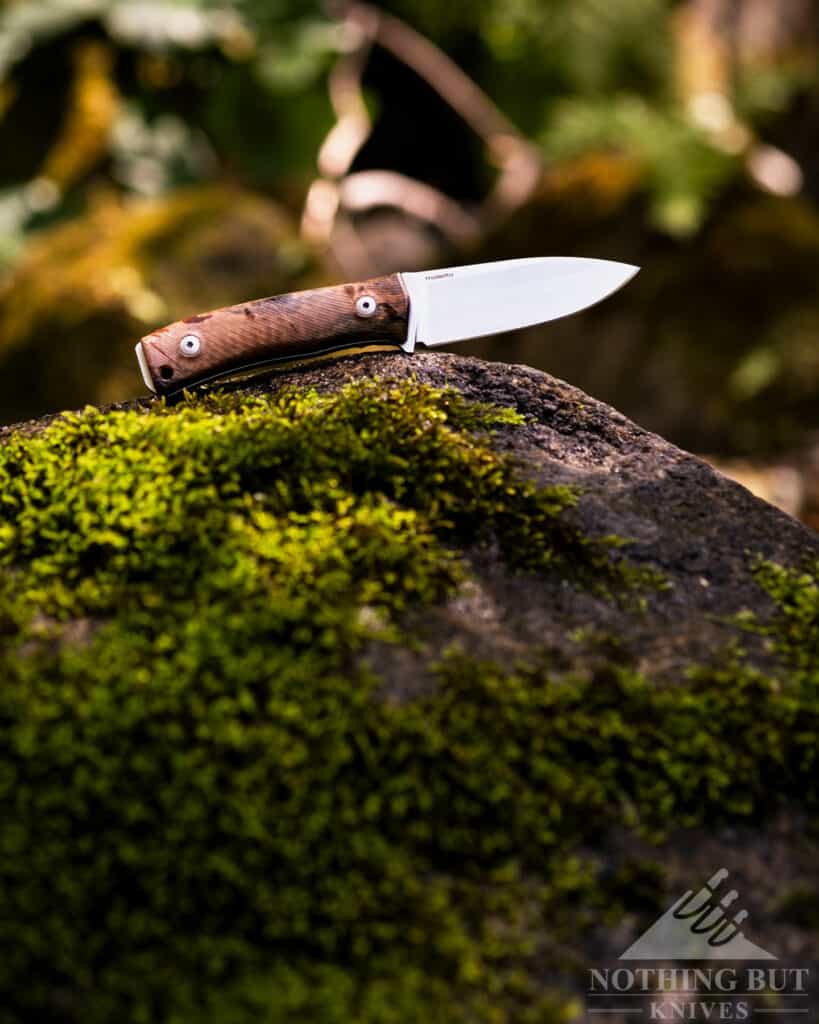
In a world when most things (products and services especially) seem to be purpose-built around the idea of achieving sensory overload in a customer; where meaning is often secondary to volume – there, I tend to award points just for a tool’s understated appearance.
Still, were the M4 simply an unassuming knife, that alone sure as hell wouldn’t make some reviewers go as far as to contend this knife’s superiority to the Fällkniven F1 (to many, the incumbent champ of all survival/bushcraft blades). No; the M4 may be easy to pass over at first (I did, so I know), but one closer examination later was all it took for my sense of quality to take over.
(As a disclaimer, I don’t mean to give the impression that the M4 is a cheap knife, but as you will see later on, both its overall quality and the materials used more than justify its price tag.)
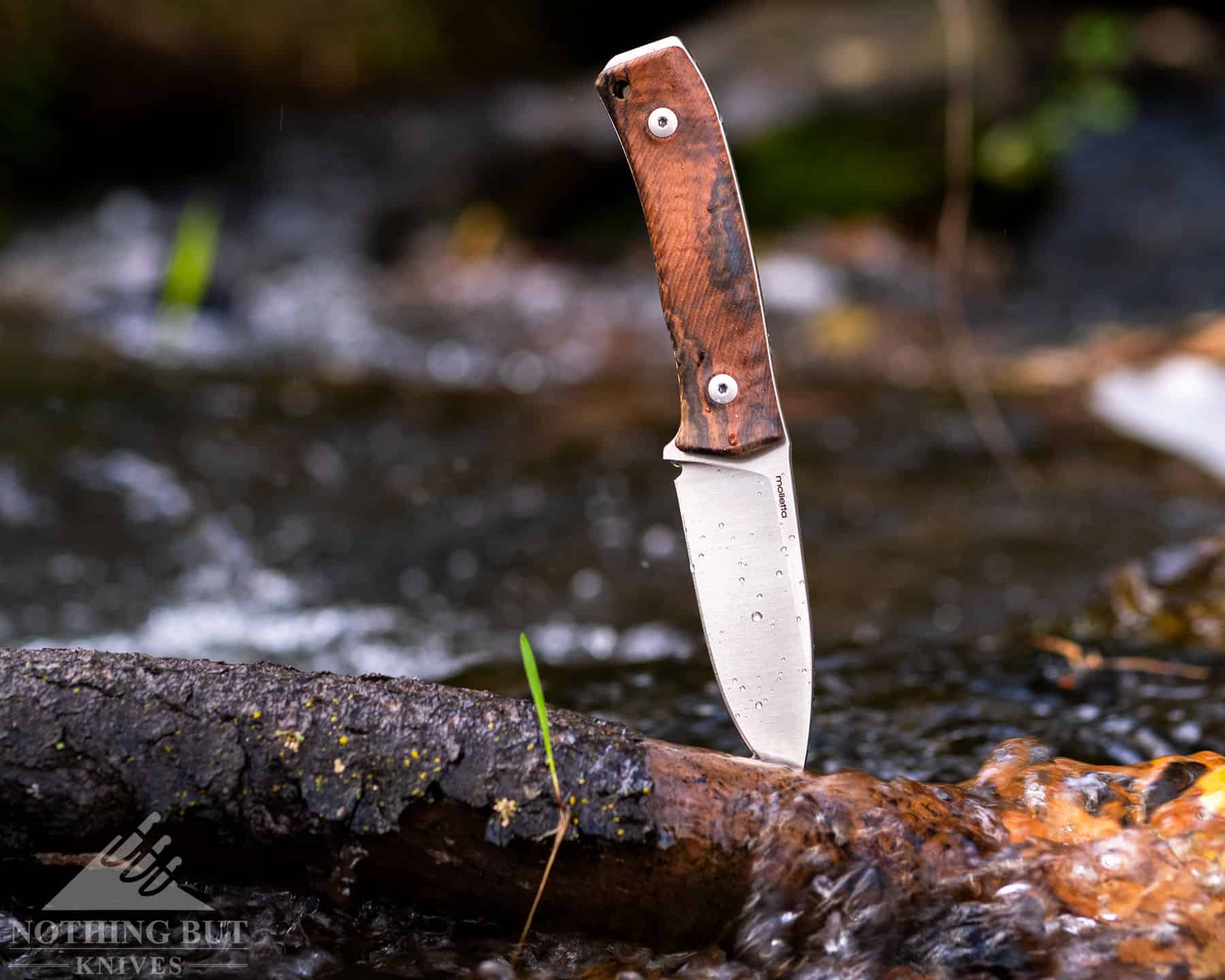
The M4 is one of LionSteel’s designated bushcraft offerings.
As I may have mentioned elsewhere (perhaps not in so many words), the late Barbara Bush had probably forgotten more about Bushcraft than I can ever hope to learn, so entrusting me with writing this review was, in a way, a serious lapse of judgment.
Nevertheless, while I tested this knife with an emphasis on its capabilities (or lack thereof) as a utility/general-purpose/EDC fixed-blade, I did go out of my way to gather impressions on its performance in the woods as well.
Specifications
| Overall Length: | 8.07″ / 205mm |
| Blade Length: | 3.74″/ 95mm |
| Blade Thickness: | 0.16″/ 4mm |
| Total Weight: | 5.11oz |
| Blade Steel: | Bohler M390 |
| Blade Style : | Spear Point |
| Blade Grind: | HIgh Flat |
| Handle Material: | Walnut/ Micarta/ Olive/ G10 |
| Sheath: | Leather |
| Made In: | Italy |
| Designer | Michele Pensato (Molletta) |
Pros
| EDC-able overall dimensions and sheath. |
| Superb workmanship/materials. |
| Multiple handle-material options. |
Cons
| Cons. |
| As in Cons. |
| Really? |
BUSHCRAFT CONSIDERATIONS VS. DOMESTIC SCENARIOS
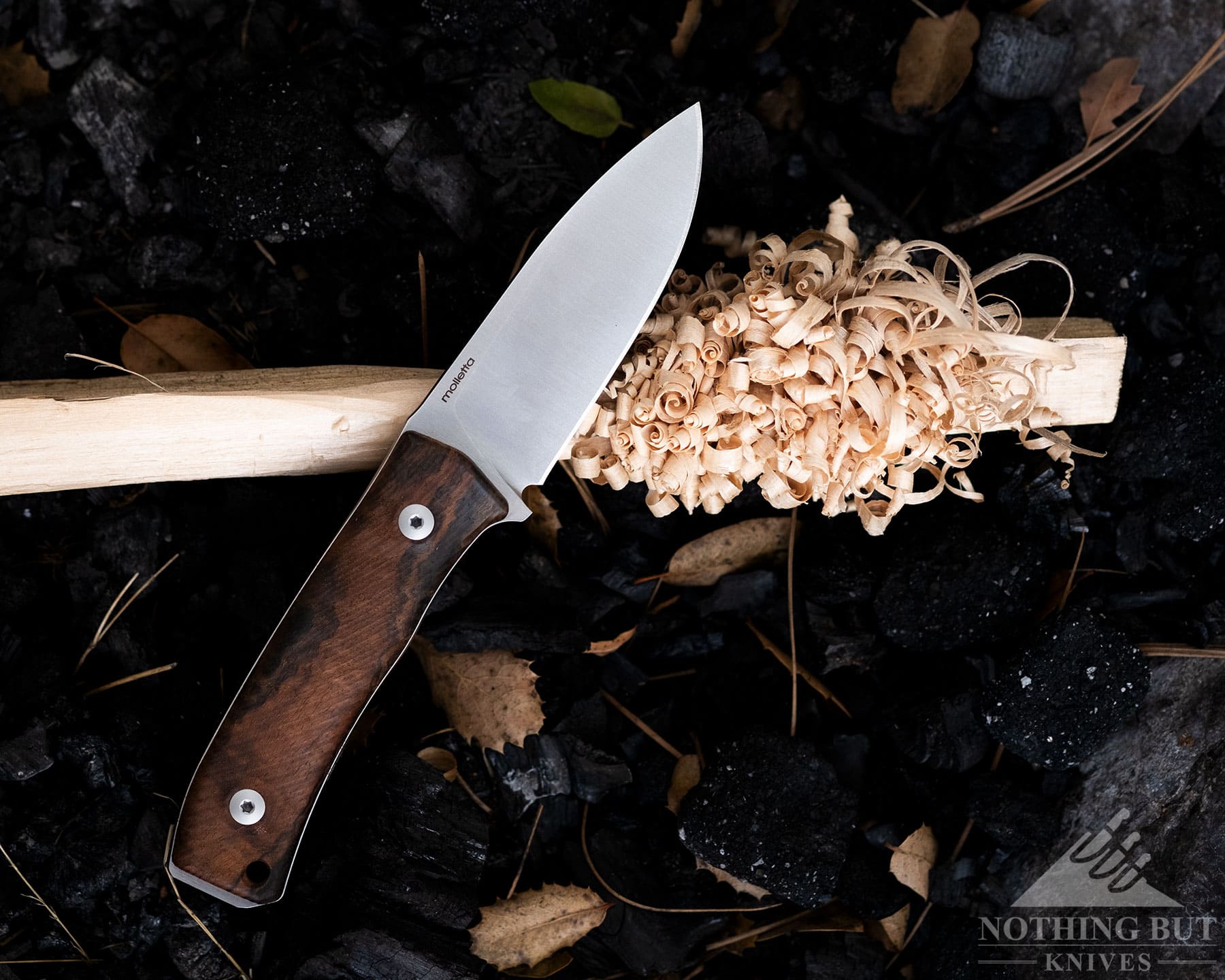
Speaking from an unmitigated position of ignorance, I still seem to have gathered over the years that bushcraft roughly means the development, use and practice of skills, knowledge and understanding needed to survive and thrive in a natural environment, equipped with a minimum of tools.
Bushcraft involves skills to provide for the basic physiological necessities for human life: food (through foraging, tracking, hunting/trapping, and fishing), water-sourcing and -purification, shelter-building, fire-craft. (These may be supplemented with expertise in twine-making, knots and lashings, wood-carving, campcraft, medicine/health, natural navigation and tool/weapon-making.) Bushcraft comprises capabilities to handle certain tools like bushcraft-knives and axes.
The term bushcraft was popularized in the Southern Hemisphere by Les Hiddins (the Bush Tucker Man) and in the Northern Hemisphere by Mors Kochanski; bushcraft more recently got considerable traction in the UK, due to the popularity of Ray Mears and his bushcraft/survival television programs. The origin of the phrase derives from skills used in the Australian bush.
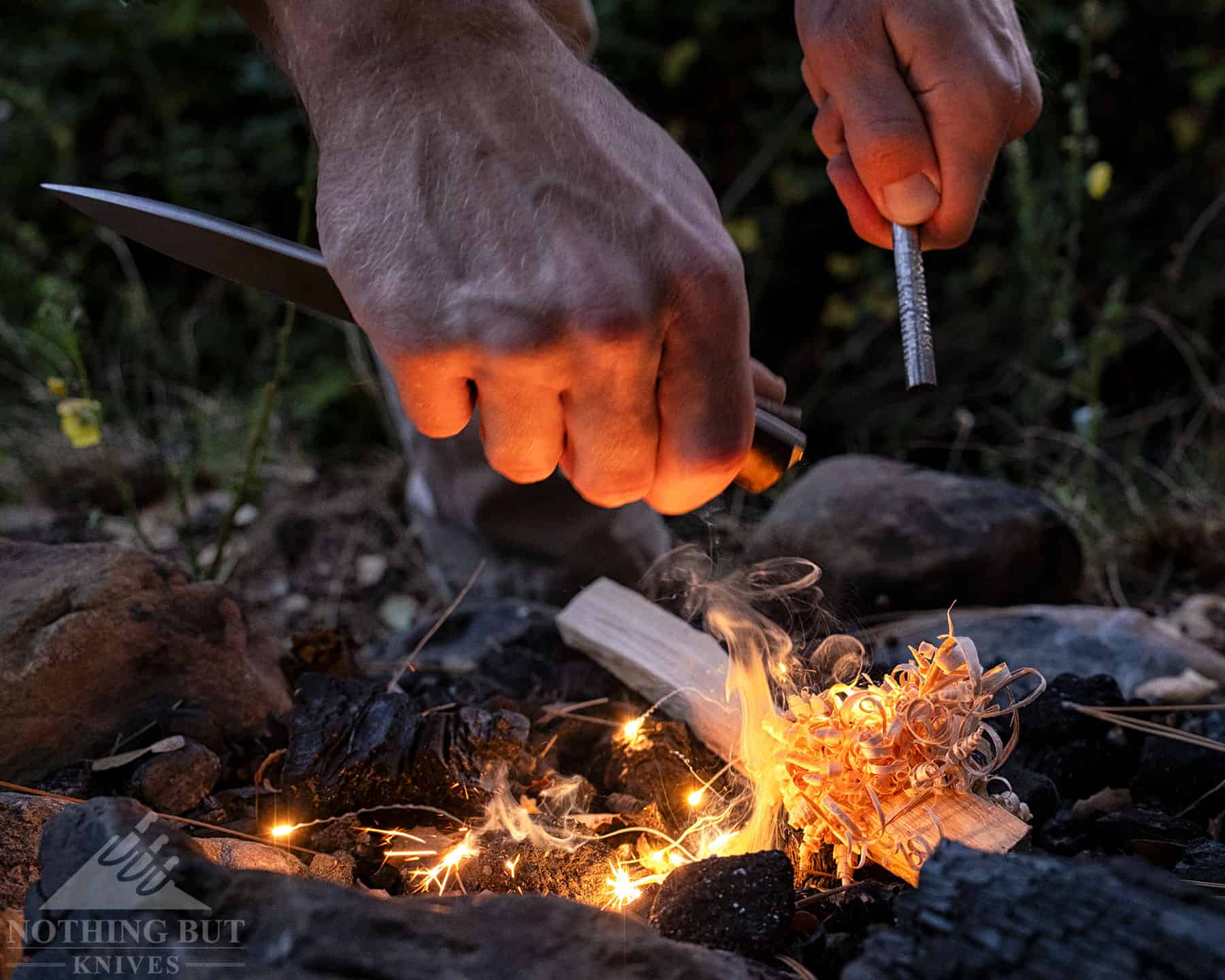
Often, terms like wilderness skills or woodcraft are used instead, as the latter two describe skills used all over the world.
My personal (and limited) experience with bushcraft knives has left me with the impression that most of these blades sacrifice personality at the altar of efficiency: I see mostly neutral, drop-point blade-shapes with Scandi- or (rarely) convex grinds; handles optimized for woodcraft-oriented versatility and comfortable long-term use, to the detriment of sexy curves.
While the M4 is in a lot of ways a good example of the foregoing, it’s different in an equal number of ways – enough so that it can be put to good use in your everyday life as well (although you should check your local knife laws before starting to EDC a fixed-blade).
I’ve done just that – the M4 has been my everyday companion since the day it landed at my doorstep.
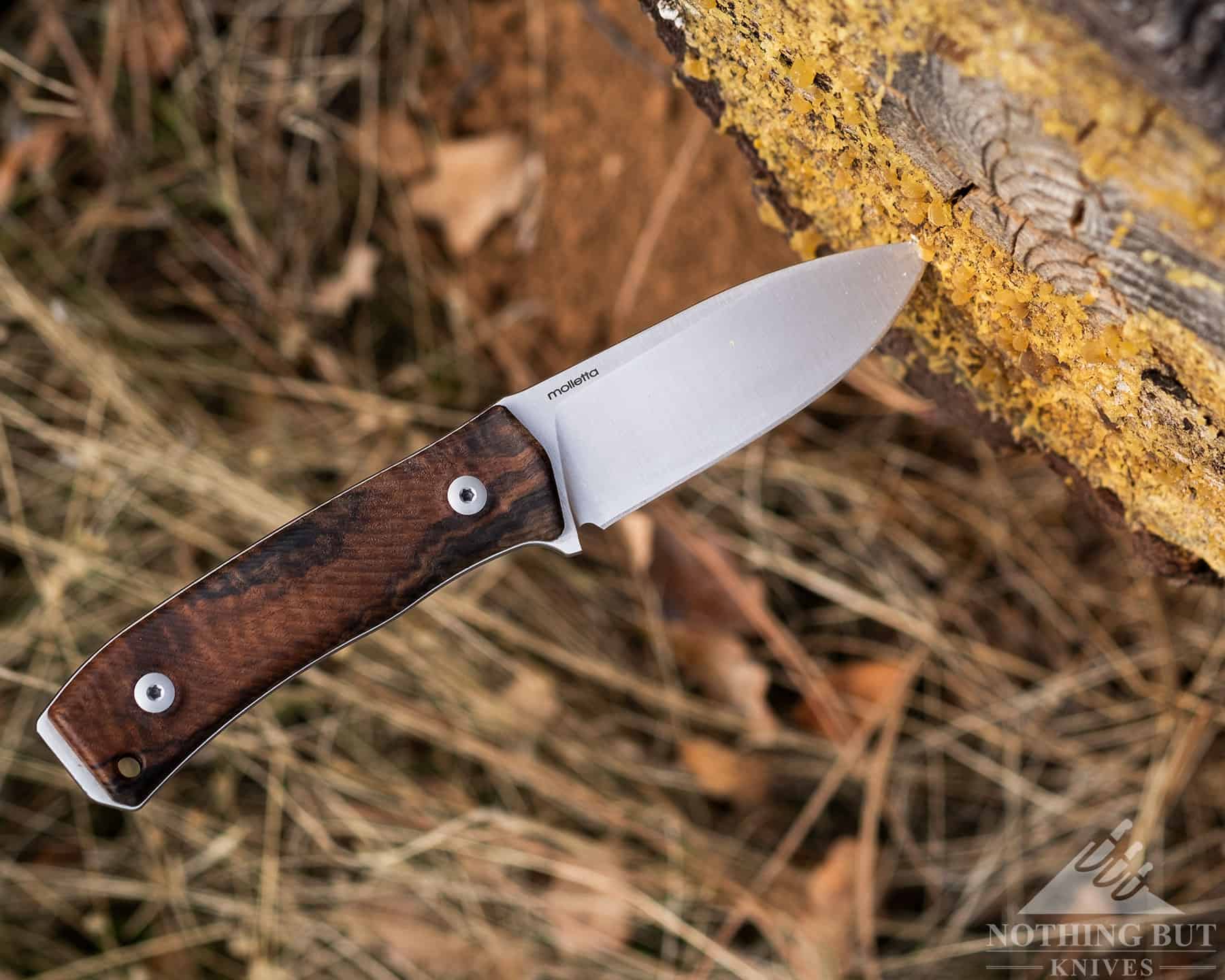
It sees the most use around the kitchen, naturally (if you set aside my daily hiking sessions with it); but it should speak volumes to you that Ildikó, my wife (who has neither the love nor the patience for such frivolities as knives around the house; if it was up to her, I could hack at carrots with the edges of my hands), doesn’t raise an eyebrow when I take the M4 out to use it on whatever the victim is at the moment (and does her best not to give me the impression that the fact she doesn’t hate this one gives me any kind of latitude when it comes to hoarding cutlery items till the damn drawers spill over).
The Blade
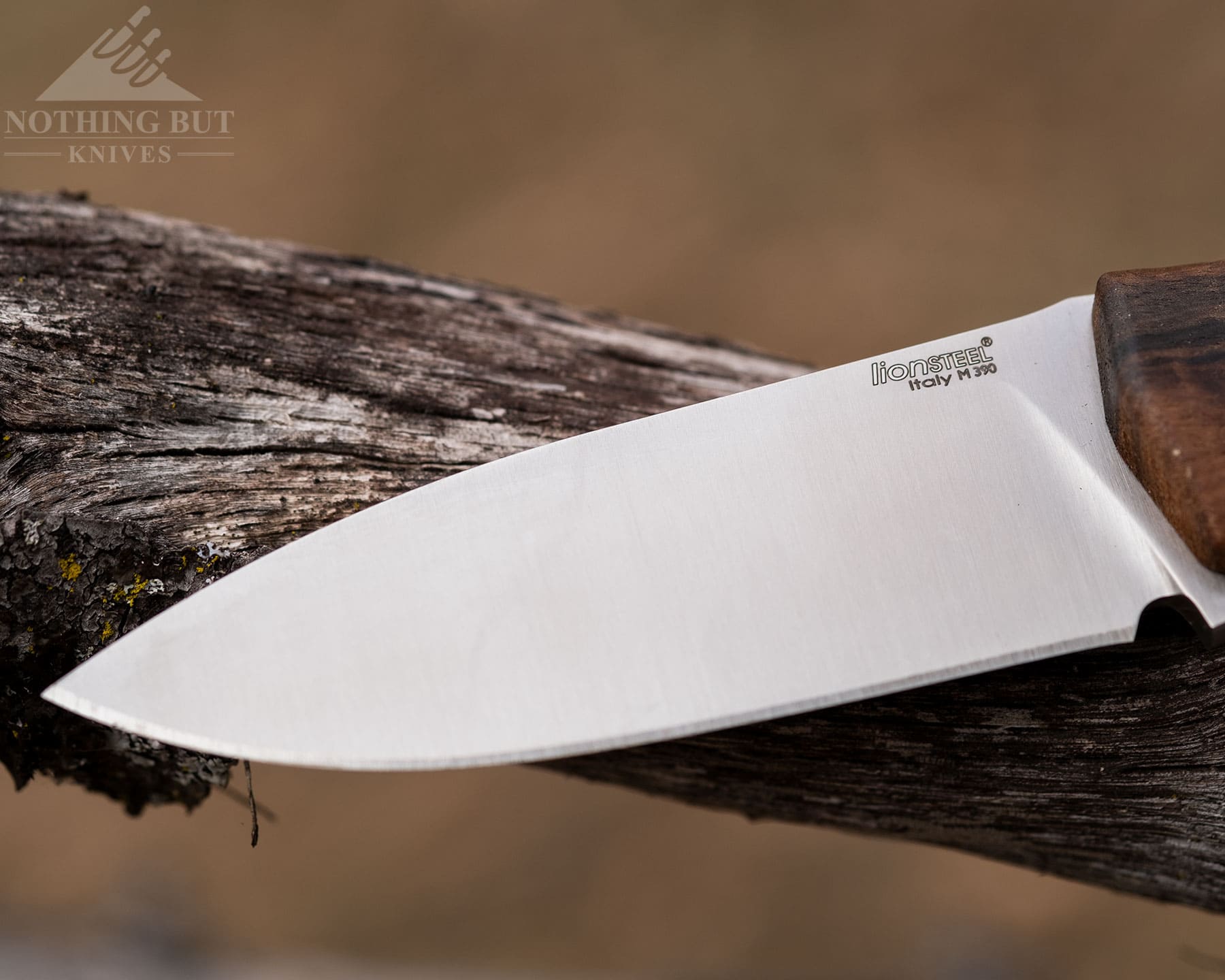
Bushcraft (and, to an extent, other general-utility) blades strive to find a good compromise between cutting/piercing ability and strength/toughness.
To that end, they need a relatively thick spine (3.5 mm seems to be standard, but some reach a full 5 mm) and to conserve most of that thickness of material downwards to the edge without sacrificing overmuch in the way of penetrative power.
Most designers achieve this by going with Scandi-grinds, but that configuration makes the edge relatively vulnerable to chipping. A convex grind solves most of the latter issue – hence the popularity of the Fällkniven F1 and its variants, among others –, but some complain that this configuration may create issues involving the blade’s wedging into certain materials. As for the tip, stabbing power is generally forsaken in these designs in the interest of tip strength (usually by way of going with a drop-point configuration).
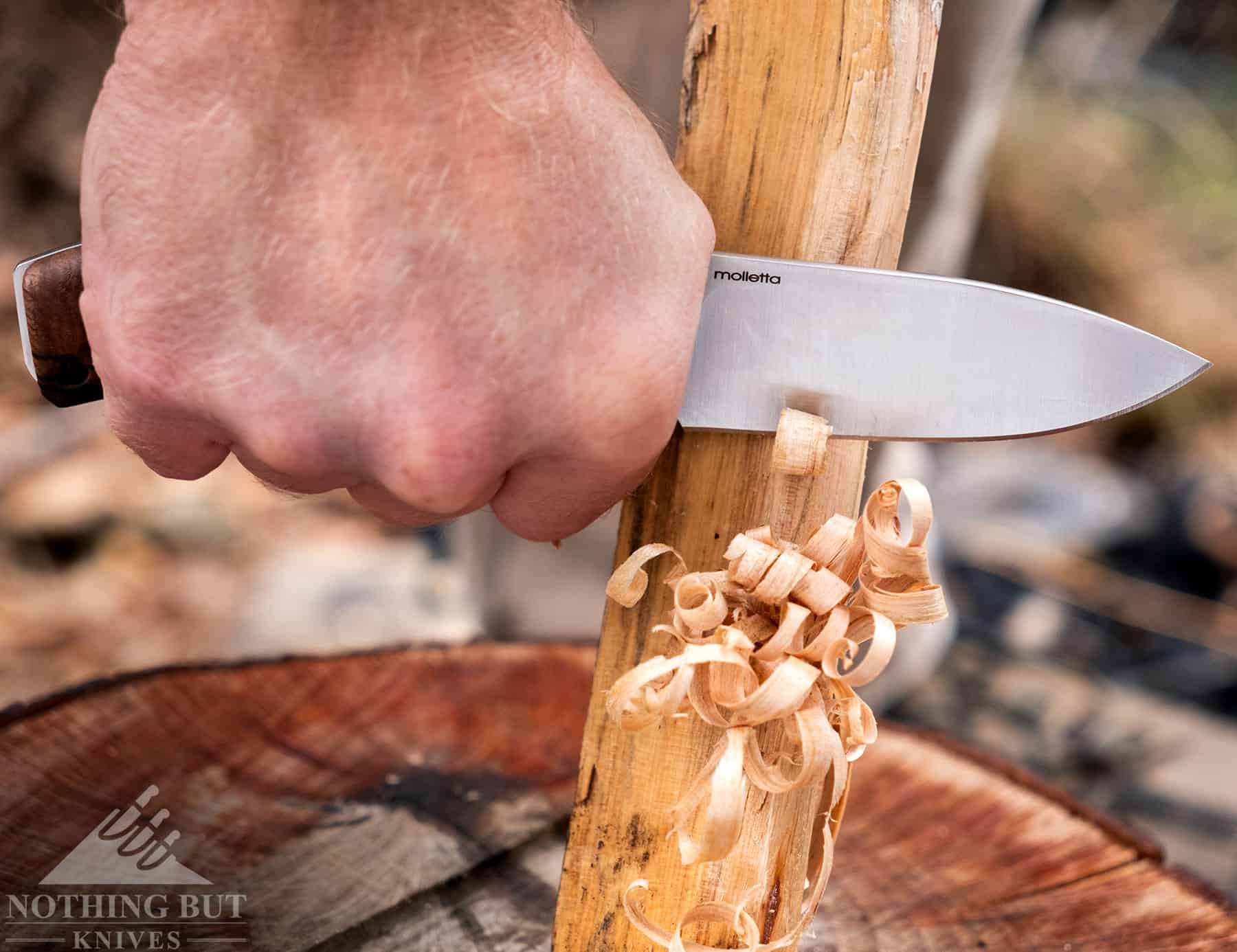
One of the M4’s aforementioned departures from a standard bushcraft knife is that Molletta opted for a spear-point, high-flat-ground blade here which, in my personal experience, has been a pleasure to cut and carve with, while not once giving me cause to worry about its response to lateral stress.
The latter is partly due to the fact that Molletta started with a thicker, 4 mm blade stock and a very hard, powder-metallurgy blade material. (By spear point I mean a tip that’s at the height of the horizontal centerline of the knife; it represents a good compromise between tip-strength and piercing capability; versatile and robust enough to allow you to do hard work with the knife.)
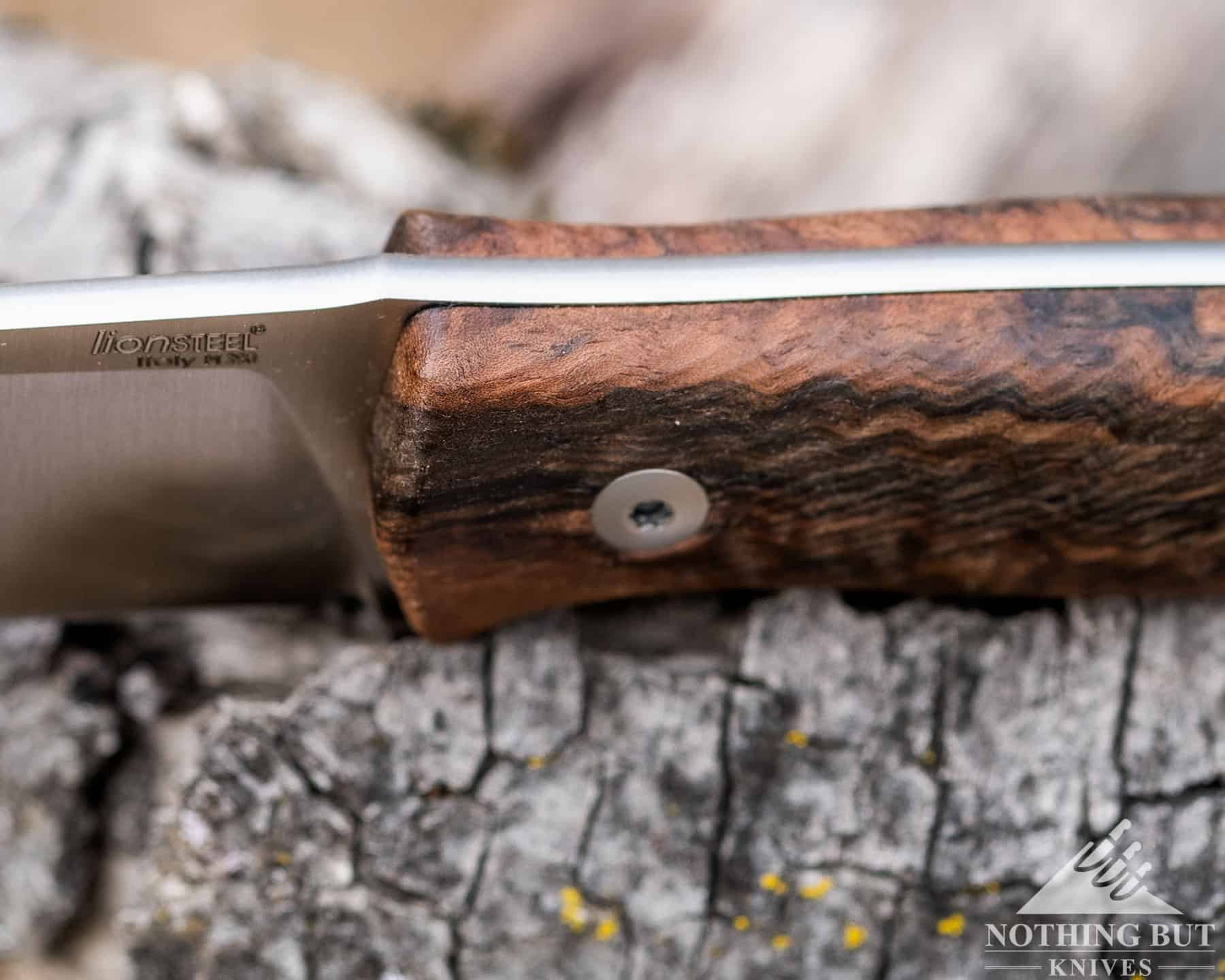
The full-tang blade features a crowned spine with the same rough portion on the pommel as seen with the M2M, included in the purpose of allowing the user to strike a fire-steel on it without having to un-sheath the knife.
I can’t speak for the practicality of that method of use, but, one, you are not obliged to do it that way – I honestly have a hard time seeing someone either fumbling with the sheathed M4 on his/her hip to get it in a position to strike a Ferro-rod on the pommel (seems, to the layman, a great way to burn down your pants), or removing the sheathed knife from their belt altogether just to throw sparks –, and two, I’ve actually seen a video of a BladeHQ guy happily throwing sparks on the crowned spine of the M4, so the latter also looks like a viable solution, even without a ninety-degree spine.
Another ingenious feature of the M4’s blade is its guard-area. No, I know that a veritable upper-lower guard on a bushcraft knife would be a deal-breaker for most people; what we see here is roughly the same kind of lower bump as with the F1 (added to keep your fingers from sliding on to the cutting edge), preceded by a sharpening choil. What makes the M4 pretty unique is that the lower “guard” is mirrored on the spine with a minimalist “thumb-bump” (for either the actual lack of a better word or my limited vocabulary); the latter feature makes a world of difference as an orienting point for your thumb when doing detailed work with the knife. Besides their usefulness, these upper-lower features help give the M4 a very clean and aesthetic look, without making it look aggressive (therefore difficult to use around non-knife people).
Molletta is also to be lauded for having found a sweet spot with the overall size of the knife and that of the blade in particular: the latter is long enough to do all kinds of jobs well, but not enough so to become unwieldy when doing detail work.
Since reviewing the LionSteel M2M, my good initial impressions about M390 powder-metallurgy steel as a blade material for small fixed-blade knives have only gotten reinforced, several times over. In that article, I wrote about this steel extensively, so suffice here to say that it’s a choice of material that works great in this knife. One thing I do want to add is that in a Tactical Reviews article, it is mentioned that “(…) M390 (…) is one of few stainless steels that with specific heat treating can have secondary hardening. It is Mik’s opinion that tempering this steel in the ordinary way, as most of the cutlery does, does not fully exploit the potential of this steel (…)”. So, presumably, they cook this steel a bit different at LionSteel.
The Handle
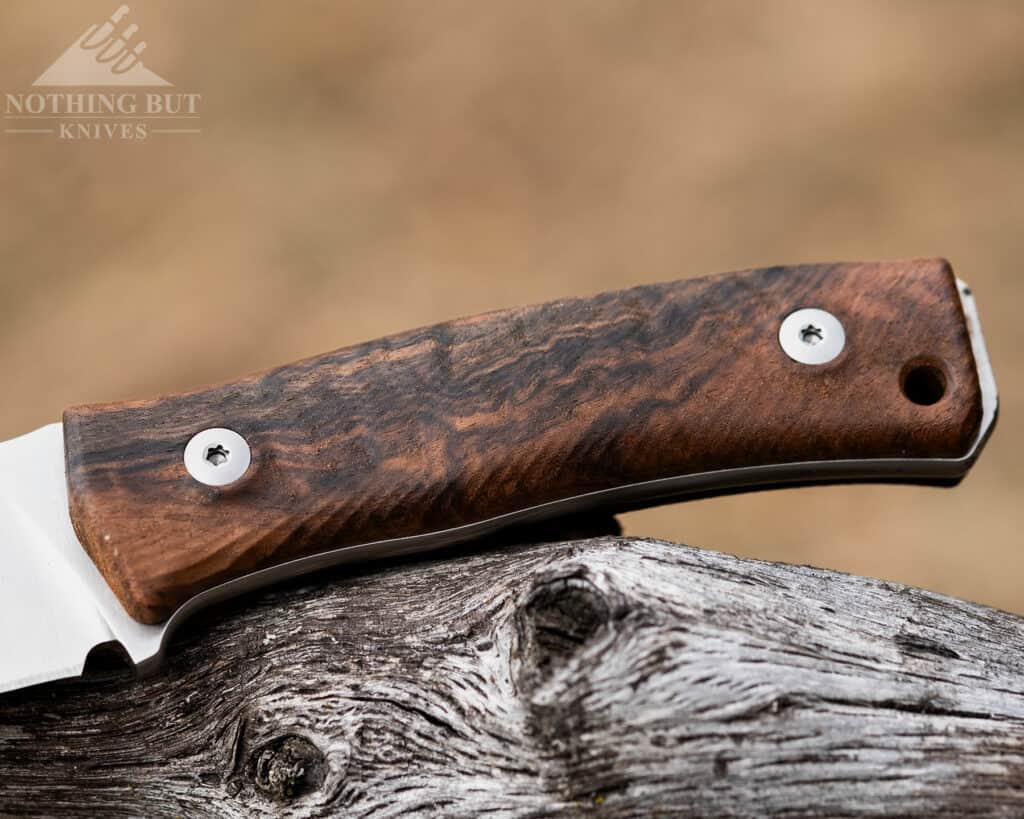
The M4 can be obtained with several different handle materials, including G-10, Micarta, Santos Wood, Olive Wood and Walnut.
My example came with sculpted Walnut handle-scales. This material feels great in hand: it’s smooth but offers sufficient traction due to its subtle texturing. I could most readily compare it to a well-machined Walnut gunstock. So far, it has held up well to the elements, doesn’t seem particularly prone to soaking up sweat, and does not require a lot in the way of maintenance. I do recommend making sure to clean your M4 regularly, and applying some gunstock-oil on the handle, from time to time, so it remains in a decent shape.
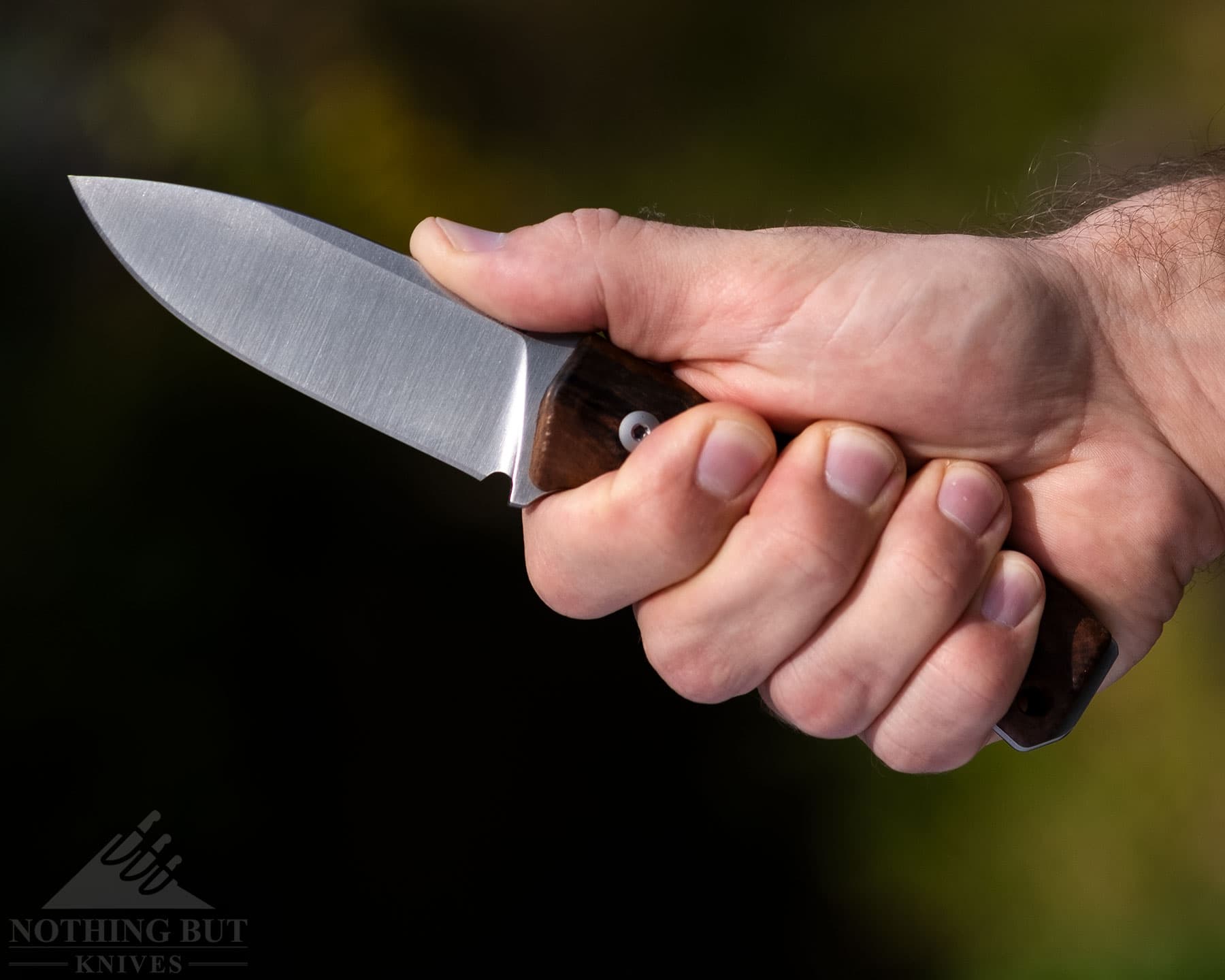
The handle scales are bolted onto the tang instead of being fastened by rivets. According to Molletta, using bolts is a superior fastening method for durable tools, as rivets may yield or loosen over time, and can’t be tightened.
A palm swell on the handle serves to mitigate the natural tendency of the hand to move along the handle to find the most comfortable grip during use. On the M4’s handle, this feature is made just sufficiently pronounced to help you hold the knife firmly.
The Sheath
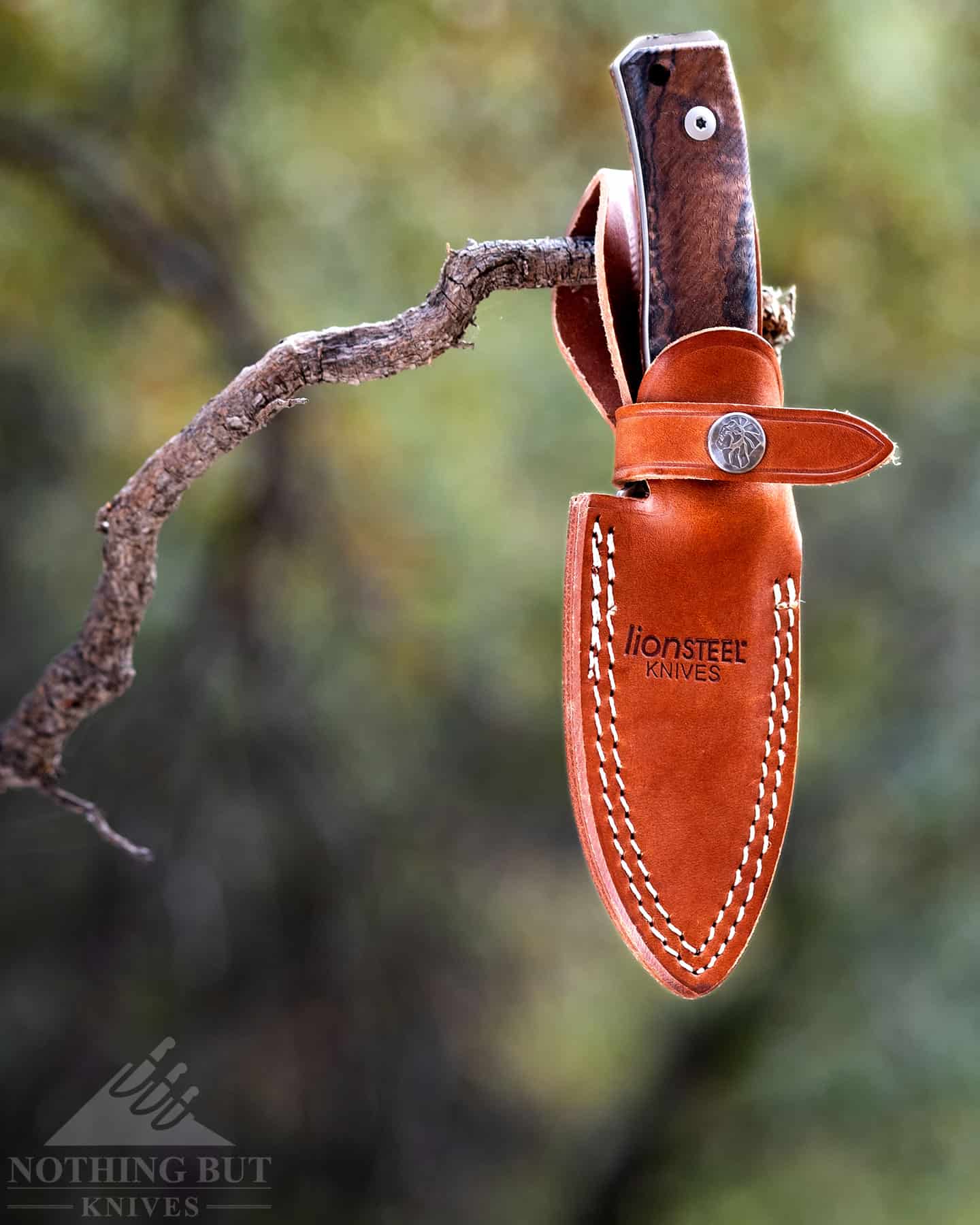
The M4 comes with a version of the same nice, hand-made, double-stitched leather sheath as the M2M does, but this one allows for right-side, vertical carry only, and the belt loop is fastened by a single rivet.
Actually, I prefer this configuration to that of the M2M’s sheath, because in long-term use, the
latter (albeit a great design) has developed issues with the fastening screws working loose (one
even falling off, but easily screwed back on), and the inner stitching of the sheath unravelling.
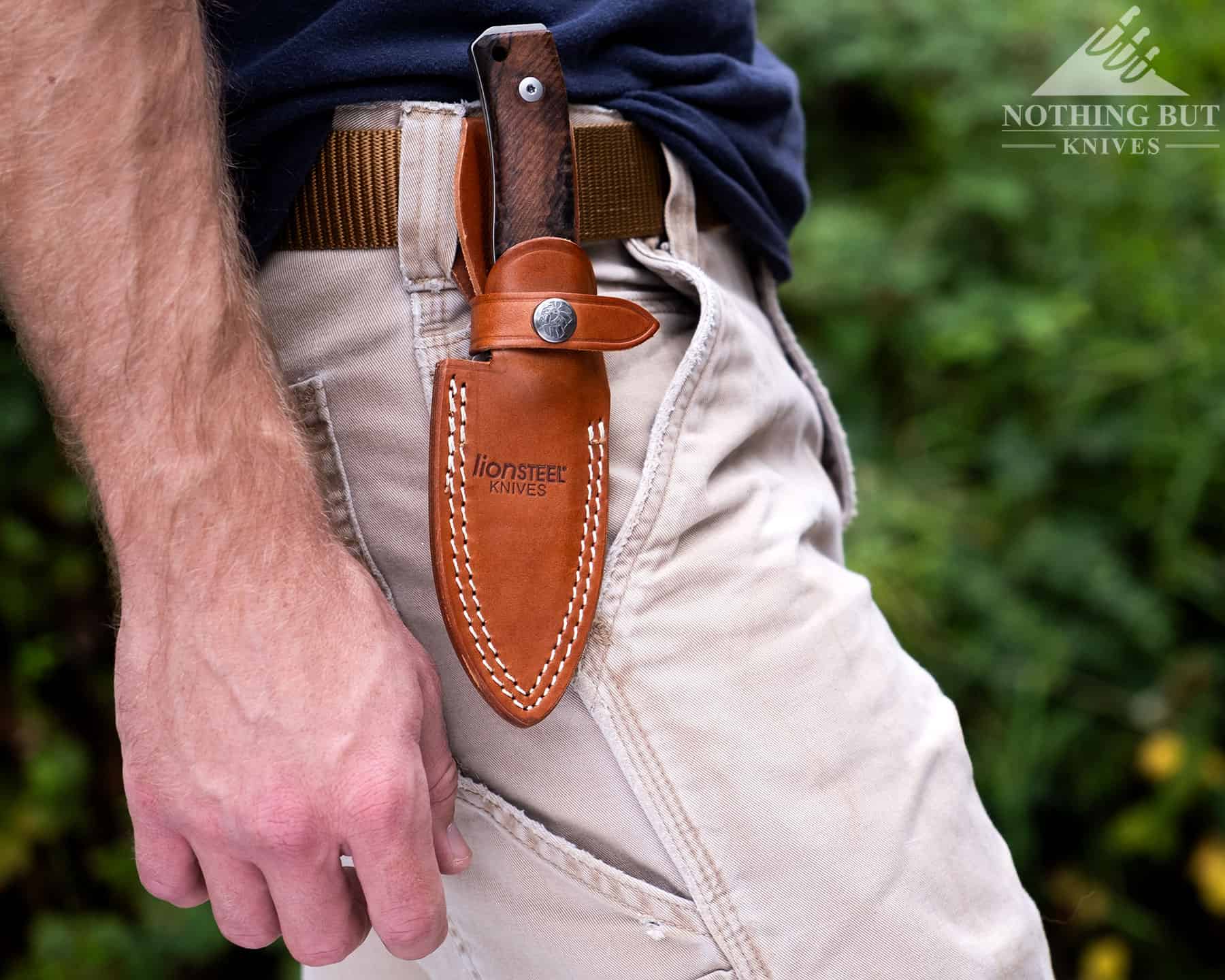
The secondly mentioned phenomenon had mystified me until discovering it to be caused by the belly of the sheathed blade cutting through the stitching inside of the sheath. No such issues with the M4’s sheath so far, but then, since the aforementioned mishap, I take extra care not to shove this blade into the sheath when putting it away.
In Use
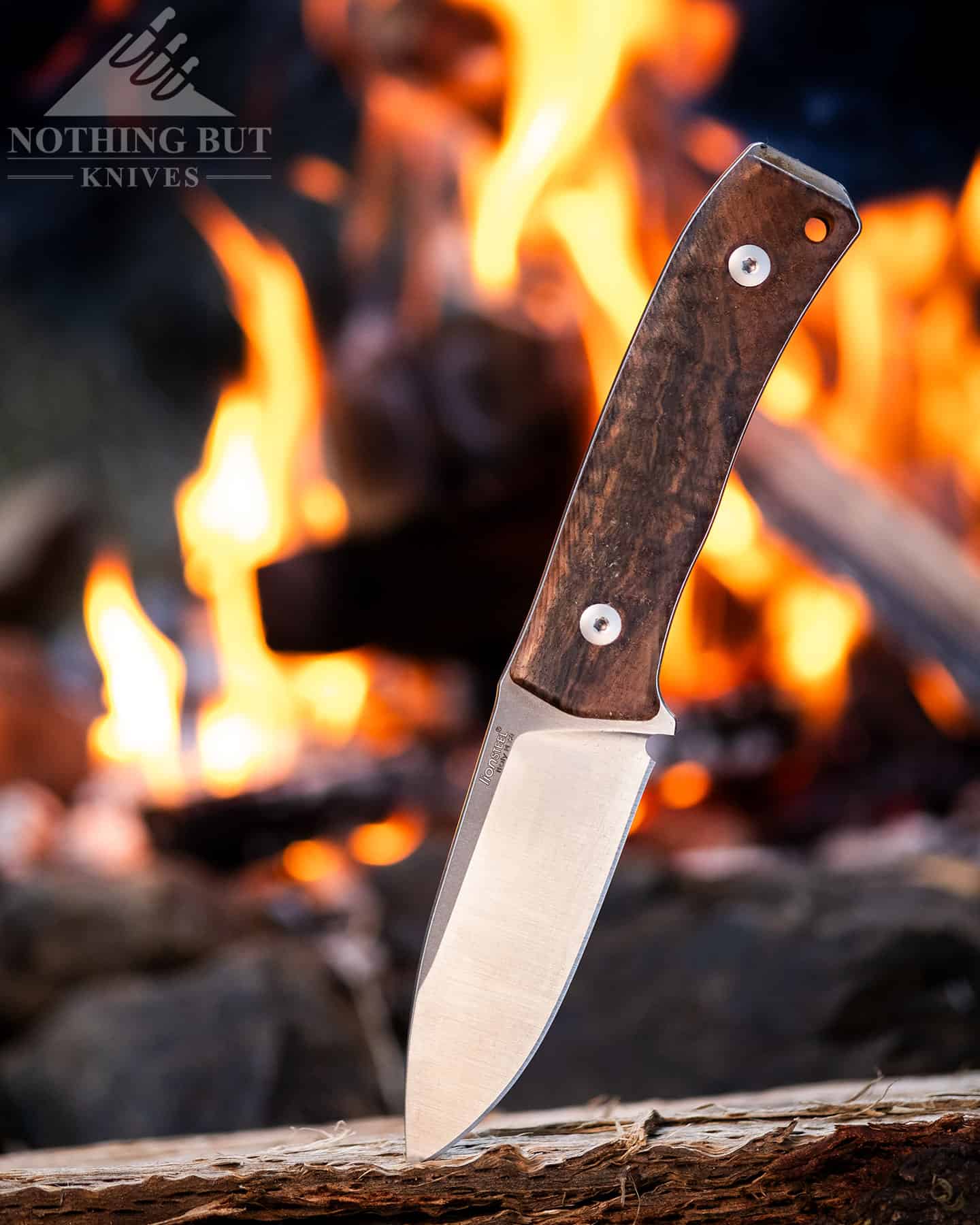
As I said before, these days, where I go, the M4 goes as well. Its inconspicuous appearance and size have so far enabled it to serve its purpose as an EDC knife without drawing so much as a second glance from strangers.
At first, reaching for it instead of for the folder I normally carry required some adjustment in attitude, but by now it comes more naturally to me. In a way, it simplifies life, and it feels unexpectedly good to have a knife that rarely needs to leave my side, and that I can use for every cutting task that I encounter in daily life.
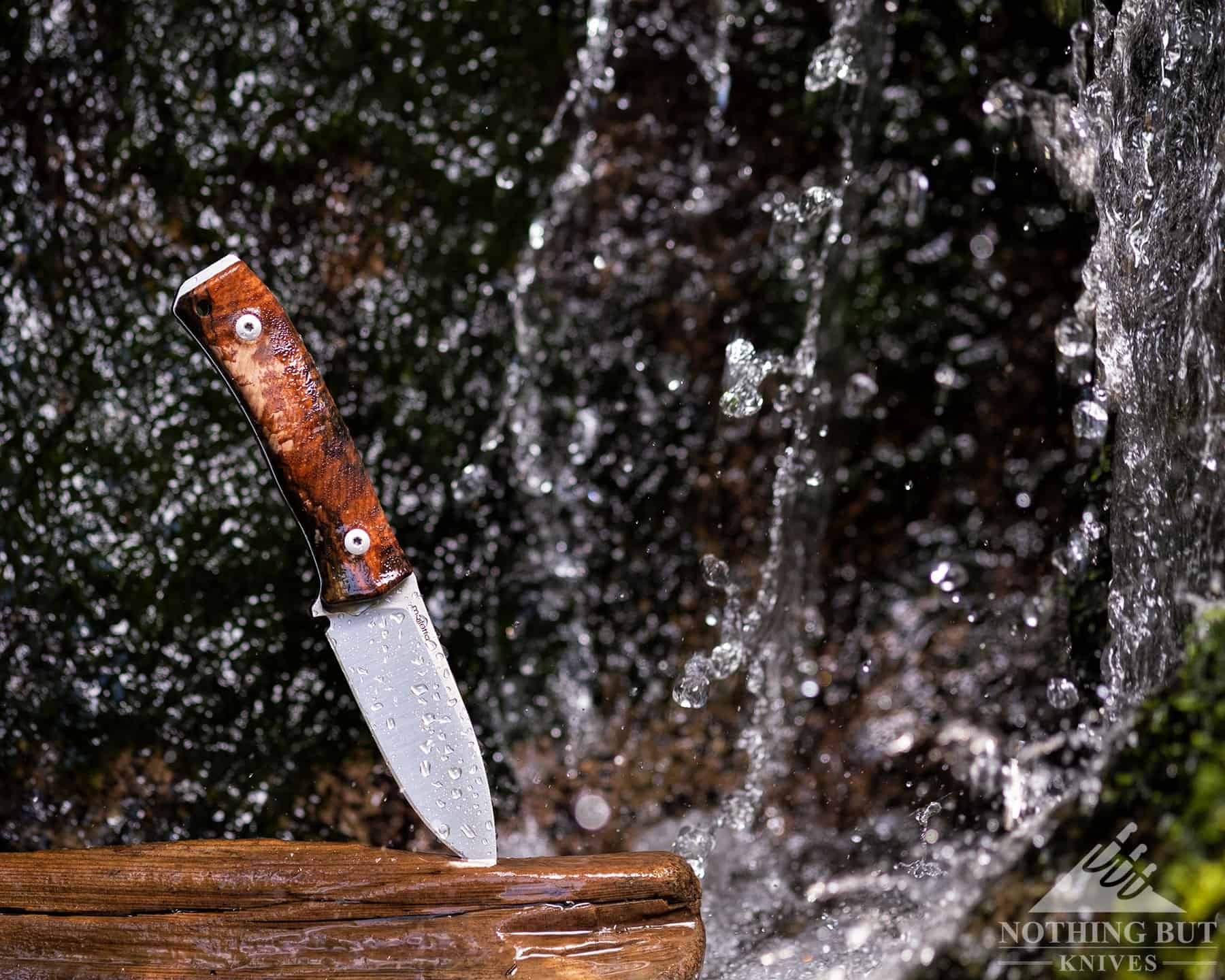
As for outdoors use: I’ve discovered, while testing the M4, that living in an area surrounded by forests, with all manner of wood-material and natural vegetation readily available, provides me with a pastime heretofore overlooked: wood-carving.
I’m a Budapest transplant here in the Balaton Highlands, and although I’ve never been a city boy at heart, it still took me a while to realize how much fun I’d missed out on earlier by neglecting to use my knives this way. Better late than never though, and the M4 stood up to every task I tried it on (or tried on it), from making (rudimentary) feather-sticks to carving a sharp end on branches.
I’ll probably take still more time before trying to baton with a knife I don’t have a spare example of, and I don’t perceive the M4 as much of a chopper, but my own reservations in this regard may represent the point of view of an outlier.
Comparison & Alternatives
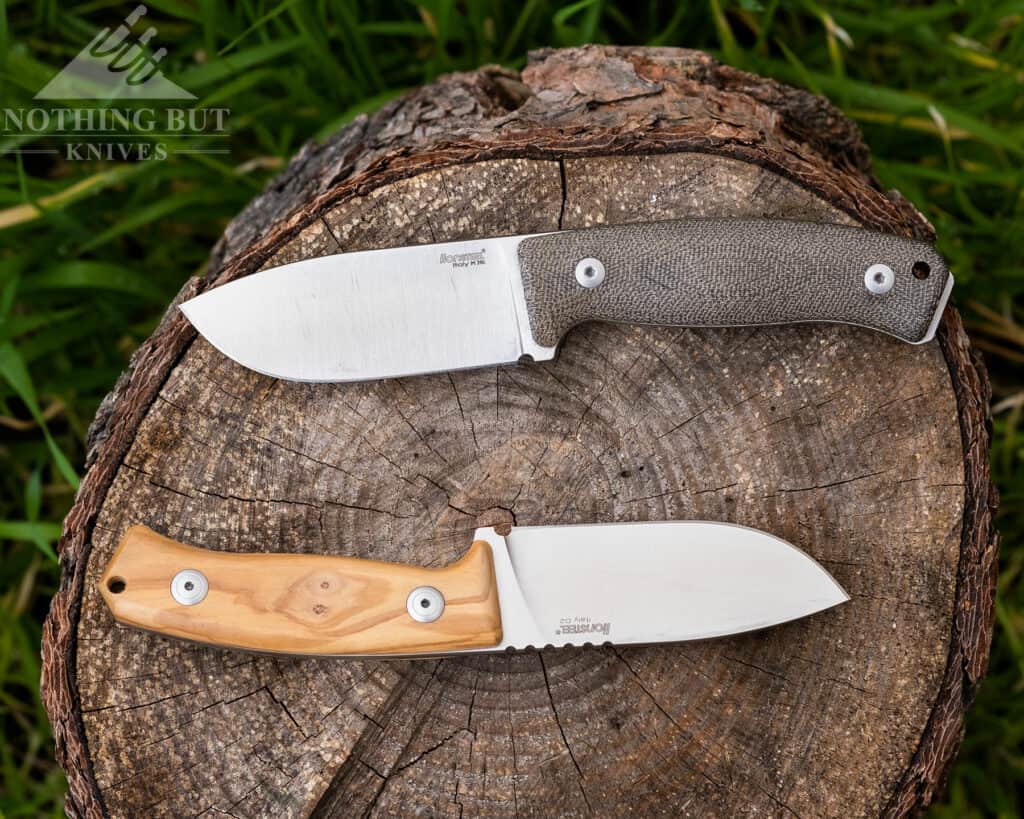
I’m at some pains to come up with good alternatives to the M4, because I can think of several knives that are extremely good at some things that the M4 is good at, but of none that offers you everything the M4 does, all in a single package.
If you’re in the market for a great EDC fixed-blade, I suggest you take a look at the Lionsteel M2M.
If, on the other hand, you’re looking for something in the same price range but with more of an emphasis on outdoors applications than on everyday carry, then you may want to consider buying the Fällkniven F1 instead.
But if you want the best of both worlds, then the M4 is the way to go.
We cover a lot more bushcraft knife options in our article on The Best Bushcraft Knives for the Money.
If you are looking for something with a retro design that is less bushcraft an more hunting and camping friendly, check out our Civivi Cloud Peak Review here.
The Joker Bushcrafter is a similarly sized, slightly cheaper alternative.
Final Thoughts and Opinons
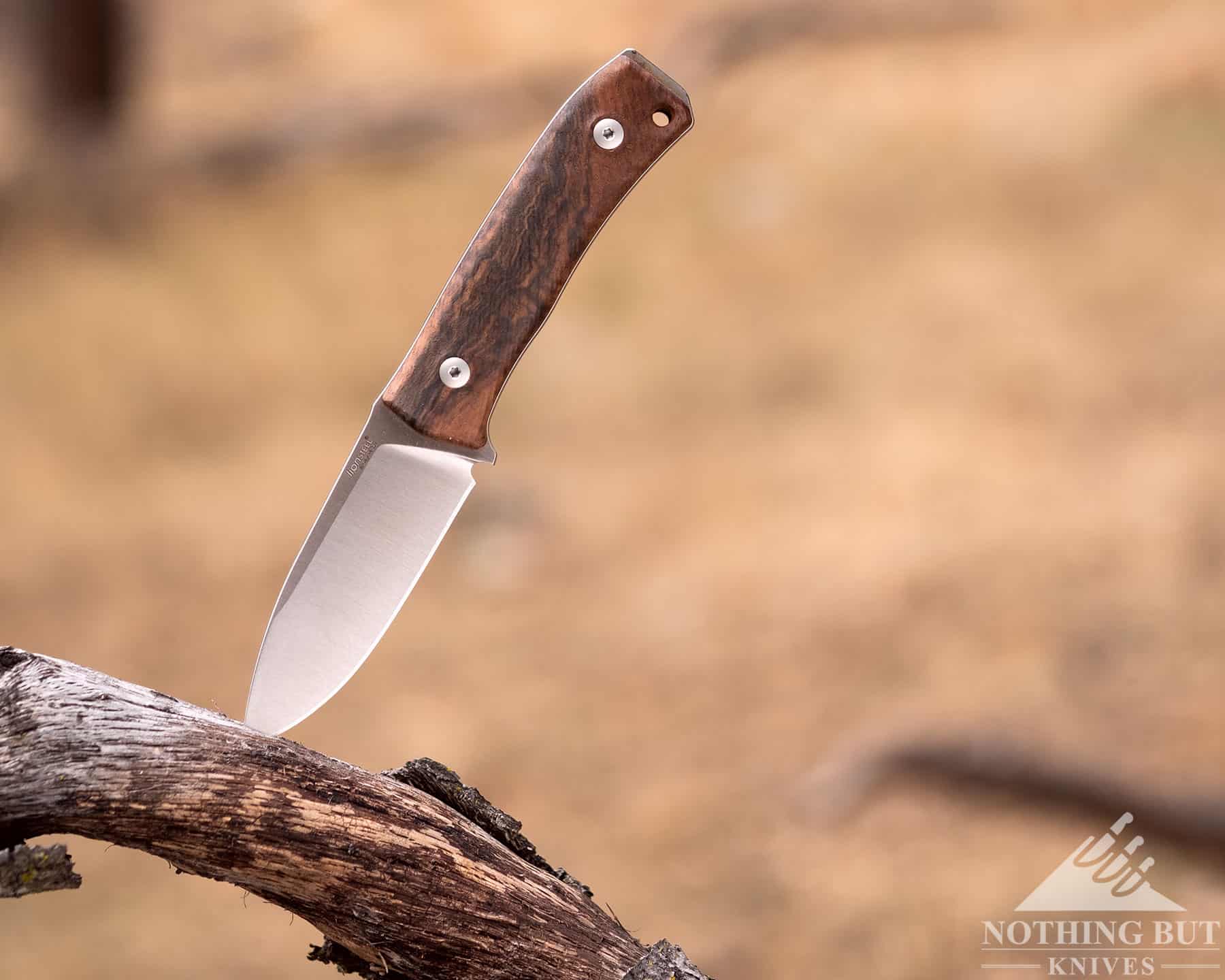
To wrap up this review: the LionSteel M4 is a superbly usable knife, which (to me) falls into that small category of knives which are both designed and executed just so; it gives you everything you need and nothing you don’t. It’s compact and light enough for you to carry it all-day without inconvenience or fatigue, but large enough to put in a good day’s work. Its premium, powder-metallurgy steel blade will go a long time without sharpening, but not difficult to work with once you need to. Confidence-inspiring strength with a dash of finesse.
In the words of Lloyd Pierce from the TV-series Yellowstone: I’m tellin’ you, she’s a hand.

Thanks for the review! I own 6 Lionsteel knives as well as other lines of bushcraft blades and really enjoy the feel of the Lionsteel best..be safe!
RIght on, Stuart. That is a great LionSteel collection. Thanks for hanging out at NBK.
Thx for the review, well written, much appreciated.
Only downside I noticed (and it’s kind of a game changer when it comes to knives): it’s rather thick behind the edge and thus not much of a slicer.
Yes, it’s sturdy and really comfy to hold, but when it comes to cutting (cardboard, wood, whatsoever), it leaves much to desire, which is a pity. And this is not compensated by the M390.
What I did was to thin out the blade behind the edge and that helped a great deal. Would be good if Moletta addressed this issue in future editions.
Greets!
Hey Peter – Great Review!
Very thorough and well thought out with all the necessary information. I’m planning to get a LionSteel M4 soon. I have several “tacticool” or outdoor knives that are very utilitarian and tough, but lately I’ve been getting ‘LionSteel Fever’! They have such an excellent combination of quality materials, fit/finish, functional design, and they are BEAUTIFUL! I just love the crowned spines, the, the quality leather sheathes, the wooden handle scales, and the models with integral Micarta handles! So far, I purchased the M1, M5, T5, Willy, and Barlow (slipjoint). I didn’t realize how much I would appreciate the look and hand feel of these knives! Yeah, my ESEE and TOPS knives function just as well and are probably a bit tougher to beat on, but it is such a joy to use my LionSteel knives because they are so damn purdy! There is something to be said for that, which I didn’t expect to enjoy so much. It’s like a Ford Tempo can get you from point “A” to “B” – no problem (maybe) . . . But it’s so much more fun get to point “B” in a Porsche 911!